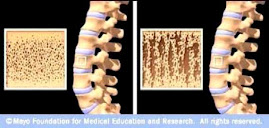“The US Food and Drug Administration
(FDA) has strengthened its warning for canagliflozin (Invokana, Invokamet,
Johnson & Johnson/Janssen) related to the increased risk for bone
fractures.”
“The …product label for
canagliflozin had already mentioned the risk for bone fractures. Now, based on
new confirmatory information from several clinical trials, the FDA has added
further warning and precaution information. In the trials, the fractures
affected the upper extremities, occurred as early as 12 weeks after starting
the drug, and typically arose from minor trauma such as falling from a standing
height.”
“The FDA has also added new
information to the label about decreased bone mineral density at the hip and
lower spine.”
“The FDA is also evaluating the
possible risk for bone fractures for other drugs in the sodium glucose
cotransporter 2 (SGLT2) inhibitor class, including dapagliflozin (Farxiga,
Xigduo XR, AstraZeneca) and empagliflozin (Jardiance, Glyxambi,
Synjardy, Lilly/Boehringer Ingelheim), to determine whether additional
label changes or studies are needed. The label for Farxiga mentions a small
number of cases of fractures in patients with renal impairment; the Jardiance
prescribing information does not mention bone effects.”
“…SGLT2 inhibitors increase
concentrations of phosphate in serum, probably via increased tubular
reabsorption, which has the potential to adversely affect bone.”
“Furthermore…SGLT2 inhibitors increase concentrations of
parathyroid hormone (PTH). Sustained increases in PTH concentration enhance
bone resorption and increase the risk for bone fractures.”
"Although canagliflozin causes a small increase in mean
PTH concentration (7.9%), the standard deviation is large. Thus, a substantial
number of patients treated with canagliflozin might have a 50% or greater
increase in PTH concentrations — a change that could be clinically significant…"
Simeon I. Taylor, MD, professor of medicine at University of
Maryland School of Medicine in Baltimore, said, "Although not proven, I
believe that increased risk of bone fracture is likely a class effect.
Nevertheless, individual drugs differ with respect to selectivity for SGLT2 vs.
SGLT1, and also with respect to where on the dose-response curve the approved
dose falls. So, it is certainly possible that the magnitude of the risk could
vary among individual SGLT2 inhibitors."



No comments:
Post a Comment